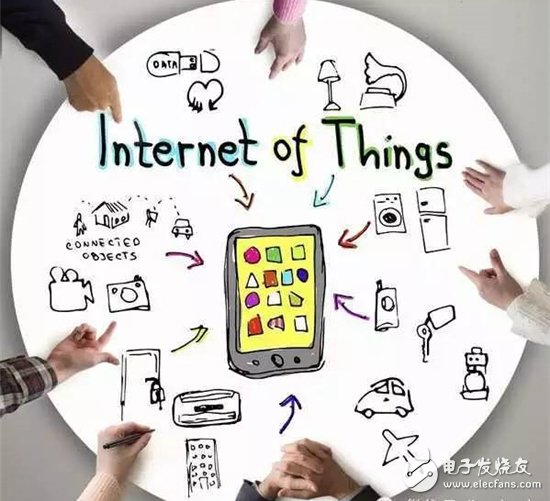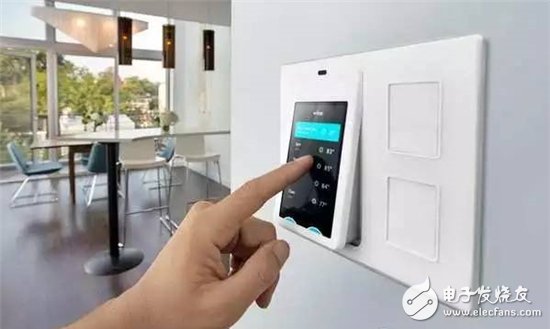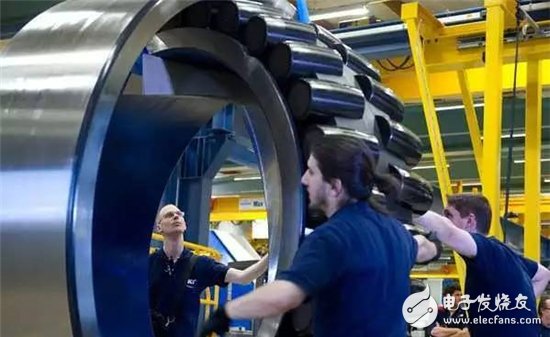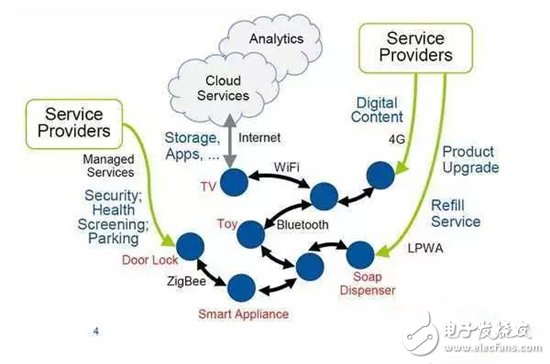
In the past two or three years, the Internet of Things has become the most familiar term in the industry. Not only technology companies, but also traditional enterprises also hope to make a big profit in the Internet of Things. According to a research report, the Internet of Things will be ubiquitous in 2025.
Despite this, after nearly a year or two of development, major technology factories have been actively committed to all aspects of research and development, but the Internet of Things is still in the early stages of development, there is no killer application, each manufacturer has a platform to support, there is no uniform Standard.
Internet of Things leads the industry's new growth
The Internet of Things, will it be the next big thing in the industry? Or is it another illusory bubble?
In this regard, Jim Tully, honorary analyst of Gartner, who has long been concerned about the development of the Internet of Things, pointed out that the Internet of Things boom is now just beginning, and there are still decades of glory in the future, bringing great business opportunities and benefits. According to Gartner's estimates, IoT business opportunities will reach 2 trillion US dollars in 2020, and connected devices will reach 25 billion, compared with 3.7 billion in 2014, the annual growth rate is 35%, so growth is other markets. Rarely, creating great business opportunities and benefits.

Figure 1: IoT Value Chain (Source: Gartner)
In particular, Jim Tully emphasizes that different market categories have opportunities for high growth rates. For example, the highest compound annual growth rate is in the automotive market, which is estimated to reach 67.2%, while general-purpose businesses such as automation and energy have 44.3%, and in consumer markets such as medical fitness, home automation or energy management, entertainment, etc. reach 32.4. % annual compound growth rate. Among them, Jim Tully pointed out that medical fitness and home automation and energy management prospects are promising. In addition, the annual compound growth rate in the fields of agriculture, public utilities, retail, and transportation in various vertical sectors is also 24.1%.
However, at a time when development is still unclear, it is necessary to seize the huge business opportunities, and the enterprise must follow the transformation to grasp the huge disruptive market of the Internet of Things.
The Internet of Things is not just a technological innovation, but also a revolution in the entire industrial structure. This has brought many changes to the enterprise, such as companies can make smarter products, enable smarter business operations, and make smarter. Making decisions, and even changing today's business models, companies must also change their business models to accommodate these changes.
IEK summarizes these changes and integrates the five major changes brought about by the Internet of Things, including the shift from a centralized large-scale to a small variety, market competitiveness from cost down to data analysis and application of value services, and industrial structure from closed vertical. The supply chain has been transformed into an open platform ecosystem, and the value chain has changed from a brand-oriented vertical division of labor to a new generation of service-oriented application ecosystem that combines horizontal and horizontal business.

Figure 2: Jian Lifeng mentioned that the integration of re-integration in the Internet of Things era, whether it is soft and hard integration or cross-industry integration, is a big challenge for Taiwan.
Hardware fast popularization service becomes the protagonist
These changes mean that the Internet of Things will be headed towards a diversified development direction. This trend will inevitably lead to a multiplier growth in the number of connected devices, but hardware is no longer the main source of profit. Jim Tully and IEK Director Su Mengzong are all the same. Point out that the greatest value of the Internet of Things is software and services. According to Gartner, the output value of various categories of Internet of Things in 2020 is analyzed, in which the output value of semiconductor factories is about 50 billion US dollars, the communication technology factory is 30 billion US dollars, and the cloud platform factory is 6 billion yuan. By comparison, the output value of services is as high as 250 billion. Dollar.
This shows that services occupy a very important part of the Internet of Things market. Jim Tully pointed out that in the two phases of the development of the Internet of Things, the first phase is "Things ProliferaTIon", and networked devices are widely and rapidly popularized due to factors such as rapid price declines and vendor subsidies.
However, compared with smart phones or other consumer products, Internet of Things devices such as surveillance cameras, parking meters, and smart door locks are mostly hardware devices with long replacement cycles, and the market will quickly reach saturation. At this time, the second stage is to use services to obtain greater profits. When the market is facing saturation, hardware manufacturers must have different ways of responding, such as upgrading the value of products with services, so that they can not be eliminated in the market. .

Figure 3: Most IoT devices are hardware devices with long replacement cycles, and the market will quickly reach saturation.
However, the role of hardware manufacturing is not as important as it used to be, but because hardware is the vehicle that provides application services, software and hardware are indispensable. Google Taiwan Managing Director Jane Lifeng pointed out that the Internet of Things is an ecosystem integration. What consumers or customers end up with is a soft and hard integrated device.
Hardware value extension extends peripheral business opportunities
Therefore, in order to create greater added value, traditional hardware manufacturers must also follow the transformation. In fact, there are already many traditional hardware vendors that have begun to transform and provide value-added services, hoping to seize the opportunities of the Internet of Things. Jim Tully takes Sweden's SKF (Svenska Kullagerfabriken) bearing manufacturer as an example. SKF adds various sensors such as accelerometers, temperature sensors, vibration sensors, etc. to collect data and analyze bearing status. Provide services such as maintenance or predictive maintenance.

Figure 4: SKF adds various sensors to its products to provide services such as maintenance or predictive maintenance.
In addition, for example, the tire manufacturer Michelin also added sensors in the tires to track the use of the tires, provide tire replacement reminder services, and can also be applied to their own capacity management, knowing the number of tire replacement in advance. In addition, the data collected by other sensors in the car allows the insurer to customize the service according to the driving habits of different drivers.
In addition to providing services to add value to the product, Jim Tully also said that hardware vendors can focus on startups and expand the market through acquisitions or partnerships. According to Gartner, 50% of IoT solutions will come from less than three years of startups, and Jim Tully points out that these startups offer innovative technology or thinking, and through the acquisition of big companies, they can launch A larger number of products drive the market, while hardware manufacturers can learn the different thinking of new ventures.
Master the hardware advantage and increase the added value
In the era of the Internet of Things, hardware profits are becoming more and more difficult, and how should Taiwanese manufacturers dominated by hardware manufacturing respond?
In the past few years, the Taiwanese industry has not mastered the transfer of smart terminals and the rise of the Internet economy, and the emergence of the Internet of Things is an opportunity for industry reshuffle. Jian Lifeng believes that the Internet of Things is an opportunity for Taiwan to change its value chain. Taiwan does not need to give up hardware. Hardware is still one of the key elements of development. He suggested that including smart factories, smart cars, smart medical care, etc. are all opportunities for Taiwanese manufacturers, especially in smart cars and automation is a great opportunity for Taiwan.

Figure 5: Although hardware is still a key factor, it must be driven by killer software or services.
Due to the diversification of the application of the Internet of Things, a small number of diverse development trends, and many emerging applications or systems require the integration of software and hardware, Cai Qingyan, chairman of the Industrial Research Institute, pointed out that Taiwan is still in a favorable position. And our strength lies in smart manufacturing.
Taiwan's complete hardware supply chain and manufacturing of electronic components such as IC design, foundry, semiconductors, packaging technology and sensors have considerable advantages. In addition, companies including precision machinery and automation have followed this trend to create an ecosystem that has strengthened the advantages of smart manufacturing. Jian Lifeng pointed out that Taiwan's hardware supply chain and endless IC design talents, including long-lasting batteries and better packaging technology, are places where Taiwanese companies can mark their eyes in the Internet of Things market. However, although hardware is still a key factor, it must be driven by killer software or services. Therefore, Taiwanese companies must build higher value on a hardware basis.
With the wide coverage of IoT applications, such as healthcare, wearable devices or smart homes, more and more electronic devices are getting closer to personal life and even into the body, and end consumers will also be safe for products. More and more attention, so Jane Lifeng suggested that when the terminal device is closer to the living body, consumers will start to care about the IC, which brand the battery comes from, or when using the home surveillance camera, pay attention to the security of the film storage, so Taiwan component manufacturers can also borrow This opportunity to build its own brand and strive for the trust of consumers.

Figure 6: More and more electronic devices are getting closer to personal life and even into the body, and consumers will pay more and more attention to product safety.
In addition, hardware vendors can focus on startups and expand their markets through acquisitions or partnerships. According to Gartner, 50% of IoT solutions will come from less than three years of startups, and Jim Tully points out that these startups offer innovative technology or thinking, and with the acquisition of big companies, Introducing a larger number of products to drive the market, while hardware manufacturers can also learn the different thinking of new ventures. The Internet of Things has a killer solution to date, and the industrial development is just like the Warring States era, which is also a crucial moment for Taiwan's new startups to cut into.
Enershare's commitment to future-ready energy solutions for smart home innovations, Enershare`s Energy Storage Systems create a flexible energy maintenance system for homeowners who want to take more control of their home energy use, it is intended to be used for Home Battery energy storage and stores electricity for solar self-consumption, load shifting, backup power, and off-the-grid use. you can use it anytime you want-at night or during an outage.
Lithium Battery Storage,Lithium Energy Storage,Off Grid Solar Power,Lithium Energy Storage System
Shenzhen Enershare Technology Co.,Ltd , https://www.enersharepower.com